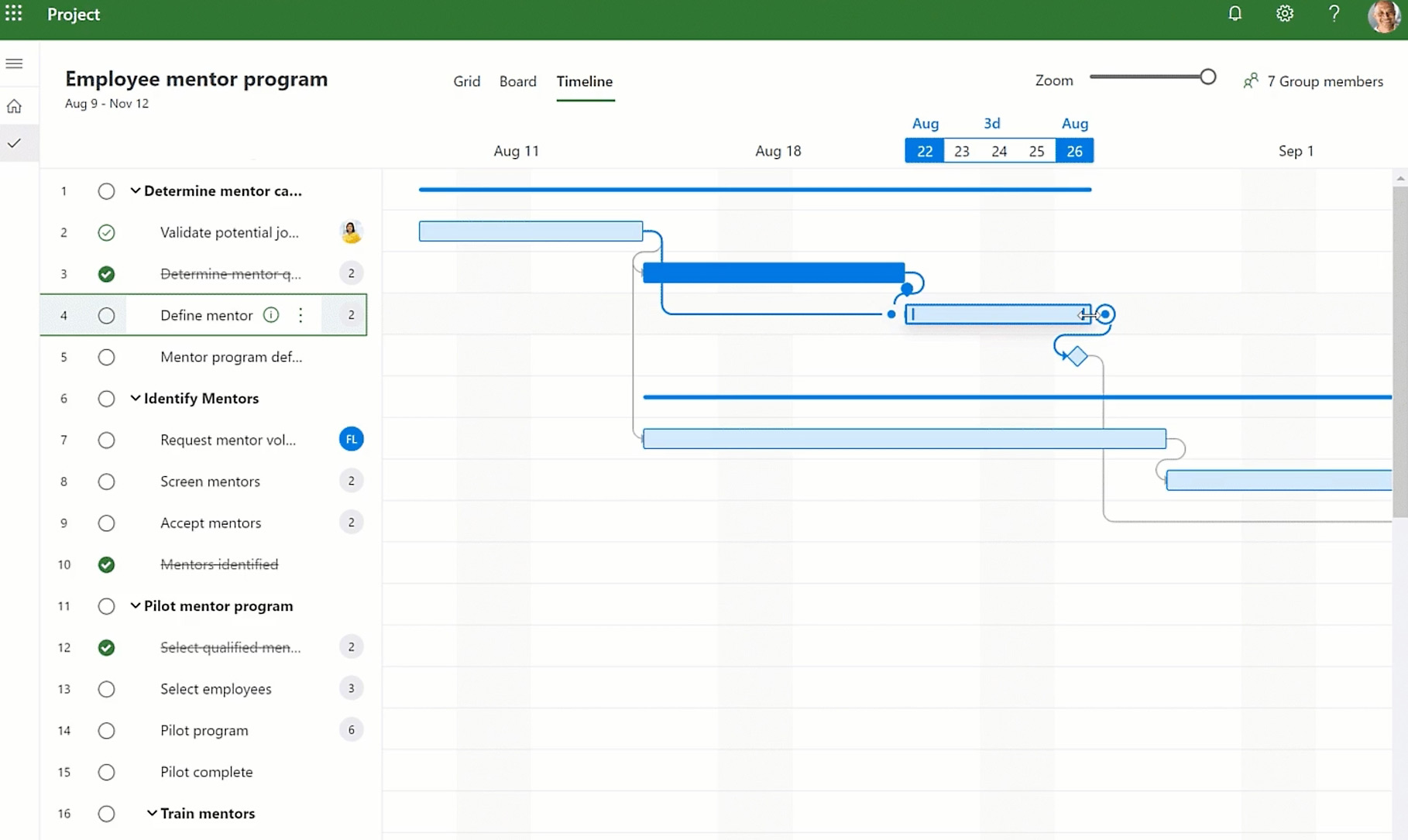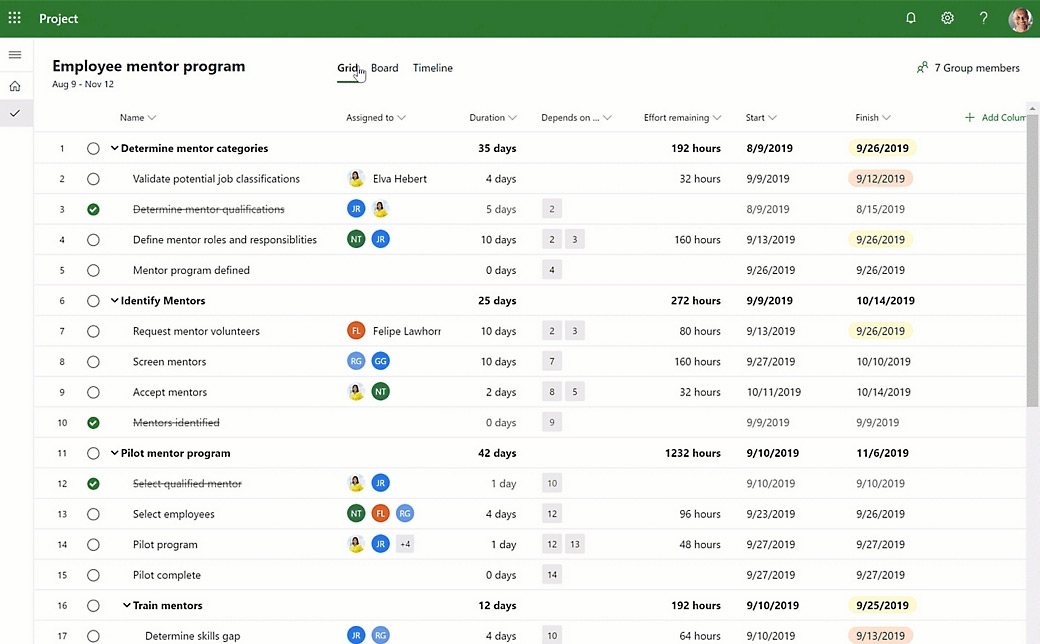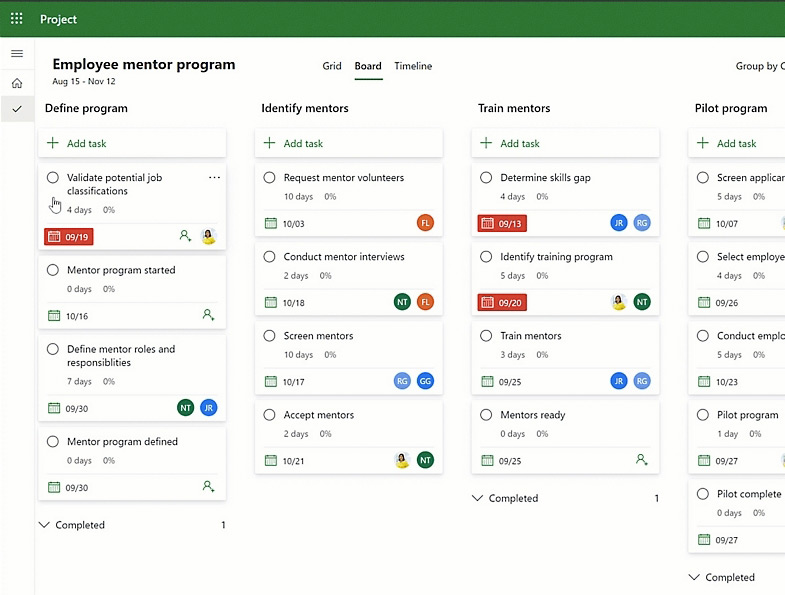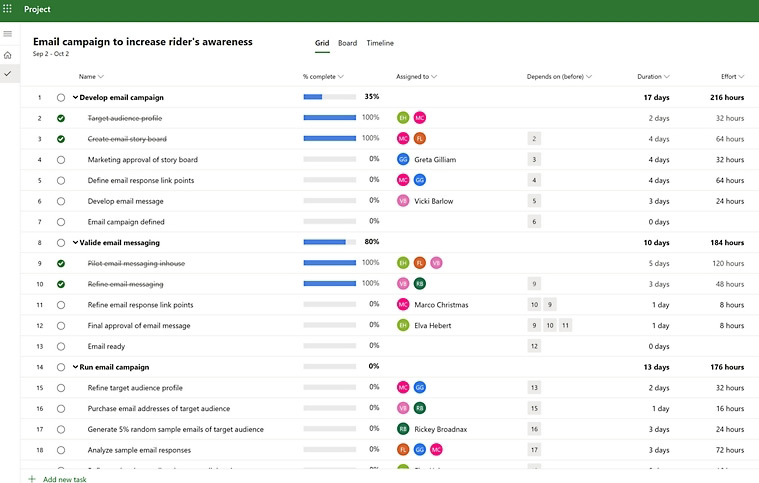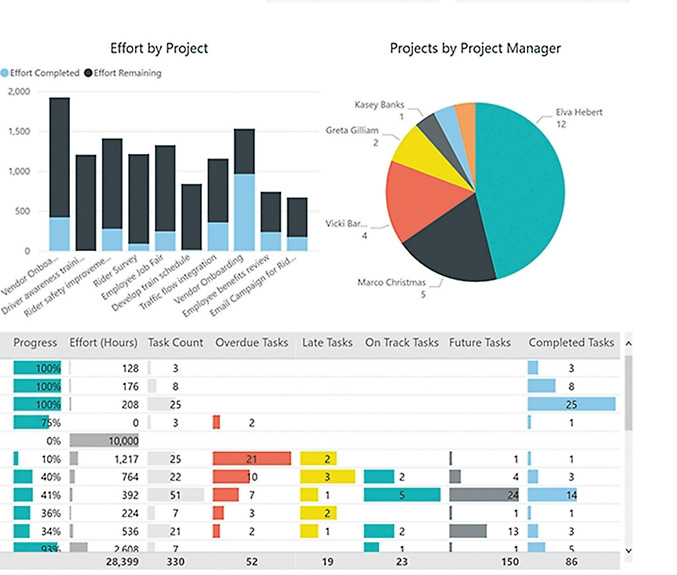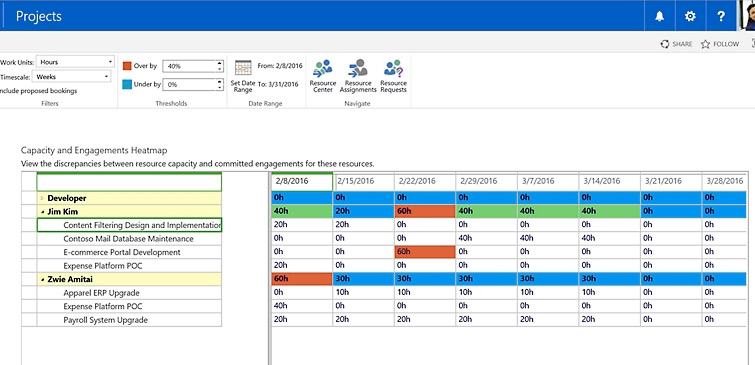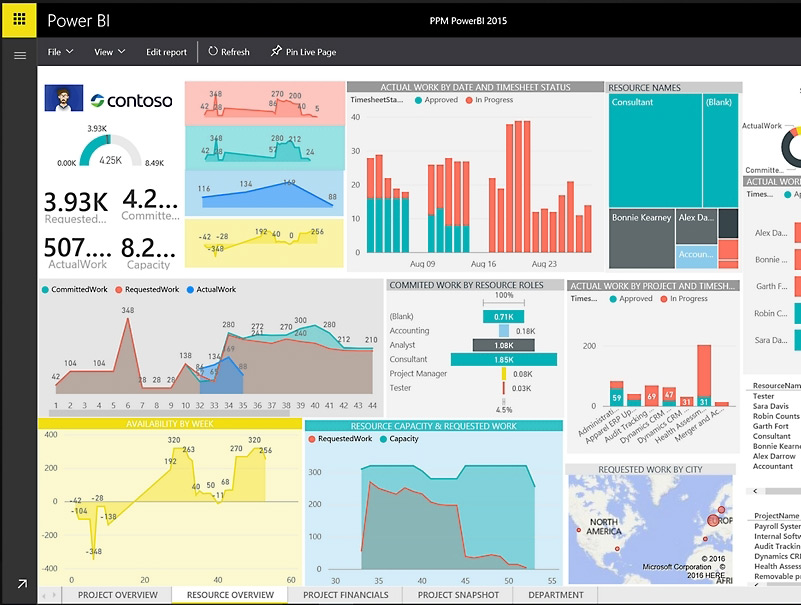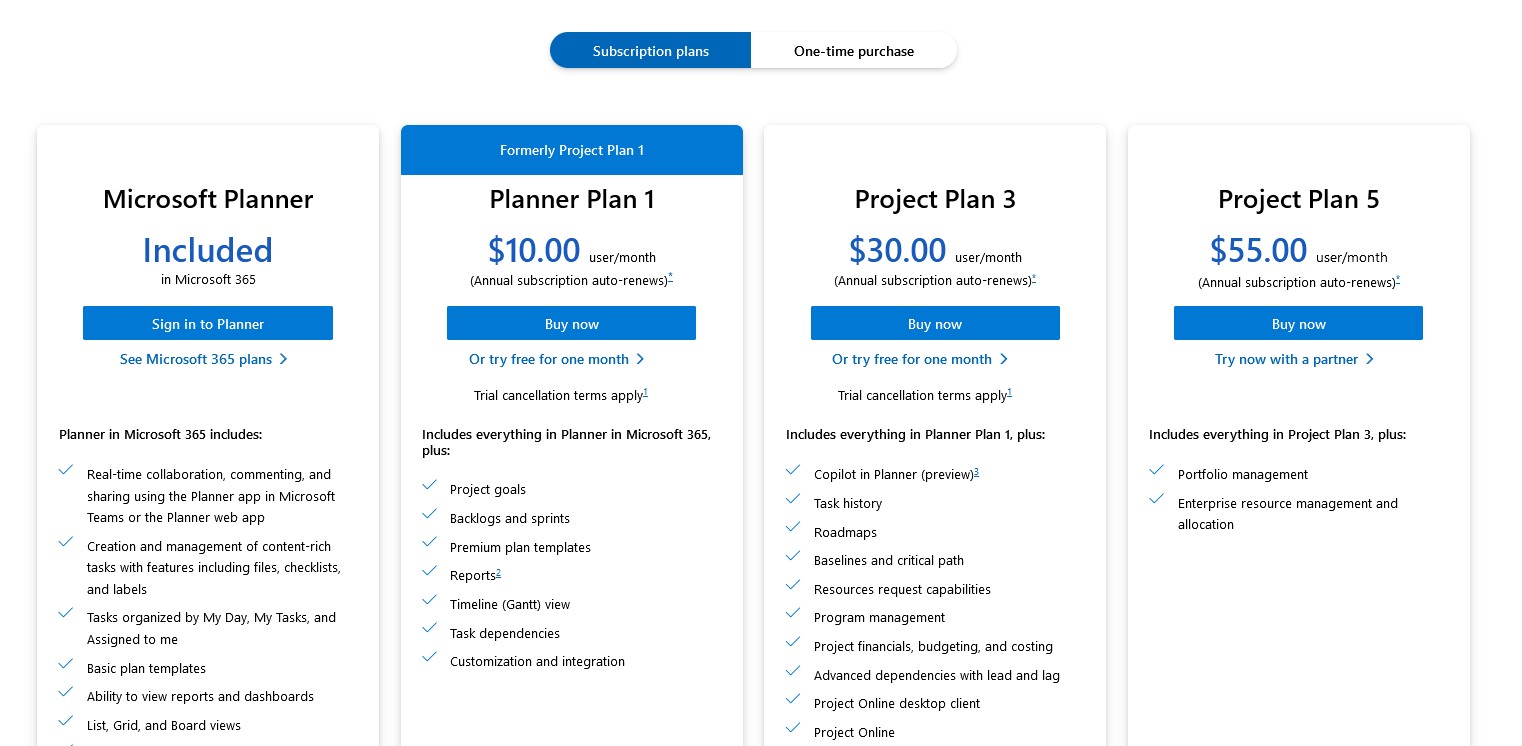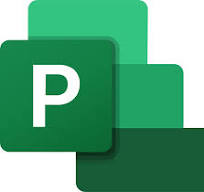
Microsoft Project Review: Pros & Cons
Pros & Cons of Microsoft Project
Pros
Advanced project planning tools
Detailed resource management
Seamless MS ecosystem integration.
Professional reporting and dashboards.
Cons
Steep learning curve.
High cost for small teams.
Limited third-party integrations
Outdated interface.
Microsoft Project's Standout Features
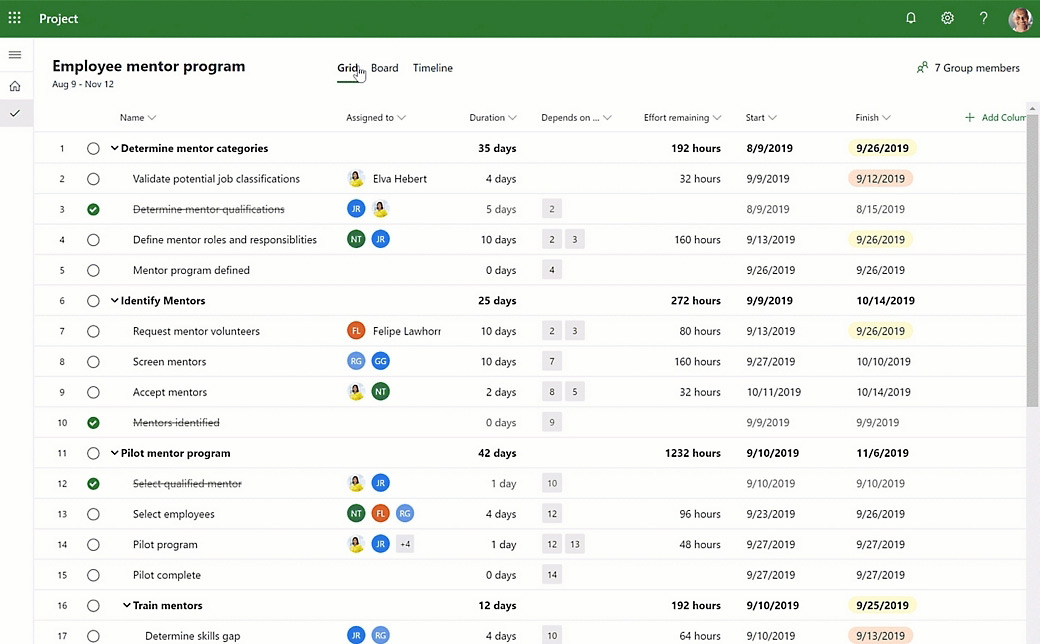
Microsoft Project stands out for its project planning and tracking capabilities. From my experience testing dozens of similar tools, few match the depth and precision of Microsoft Project's planning features. The Gantt charts are particularly notable; they offer advanced detail and interactivity. For instance, adjusting the bars on the Gantt chart updates the information in the cells in real time, a feature that outshines many competitors that offer static or less responsive charts. This makes it ideal for projects requiring meticulous planning and tracking.
Another standout feature is its advanced resource management. Unlike many project management tools that offer basic resource allocation, Microsoft Project allows detailed tracking of human and other work-related resources. This capability is often compared to integrating a separate, sophisticated resource management tool into the software. For example, you can identify your team members’ capacity and assign tasks accordingly, ensuring efficient resource use. This is a step ahead of simpler tools that might only provide a surface-level view of resource allocation.
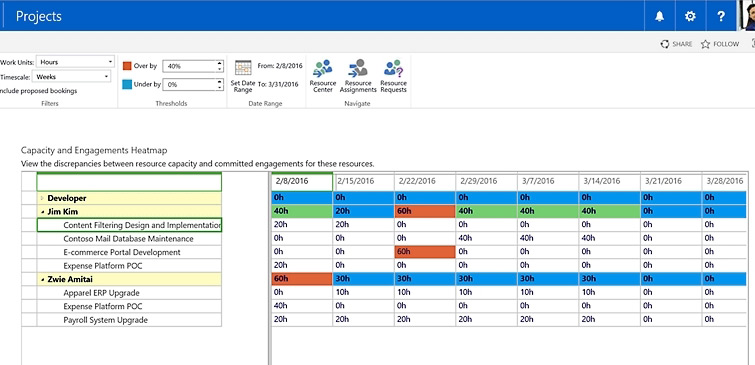
One of the most impressive aspects of Microsoft Project is its seamless integration with the broader Microsoft ecosystem. This tool works effortlessly with other Microsoft applications like Excel, SharePoint, Teams, and Outlook, creating a unified environment for project management. This level of integration is unmatched by many competitors that struggle to offer similar connectivity. For instance, you can easily export project data to Excel for advanced data analysis or sync tasks with Outlook to keep your calendar updated. Using SharePoint, you can collaborate on project documents directly within Microsoft Project, while Teams integration facilitates communication and updates within your team. This interconnectedness streamlines processes and ensures data consistency and efficiency across your organization, making Microsoft Project an invaluable asset in a corporate setting.
Microsoft Project also impresses with its reporting and dashboard capabilities. The software generates professional, presentation-ready reports, a feature praised by users who need to share project status with executives and stakeholders. Microsoft Project's built-in reporting tools save time and ensure consistency compared to other tools requiring third-party applications to achieve similar quality. The dashboards provide clear, at-a-glance views of project progress, helping teams stay aligned and informed.
Automated scheduling is a game-changer for many users. Microsoft Project’s automated task scheduling, complete with templates, simplifies project planning and reduces manual work. This feature, which adjusts dependencies and dates automatically as team members update their progress, stands out compared to tools that offer manual scheduling only. It’s particularly beneficial for complex projects where manual updates would be time-consuming and prone to errors.
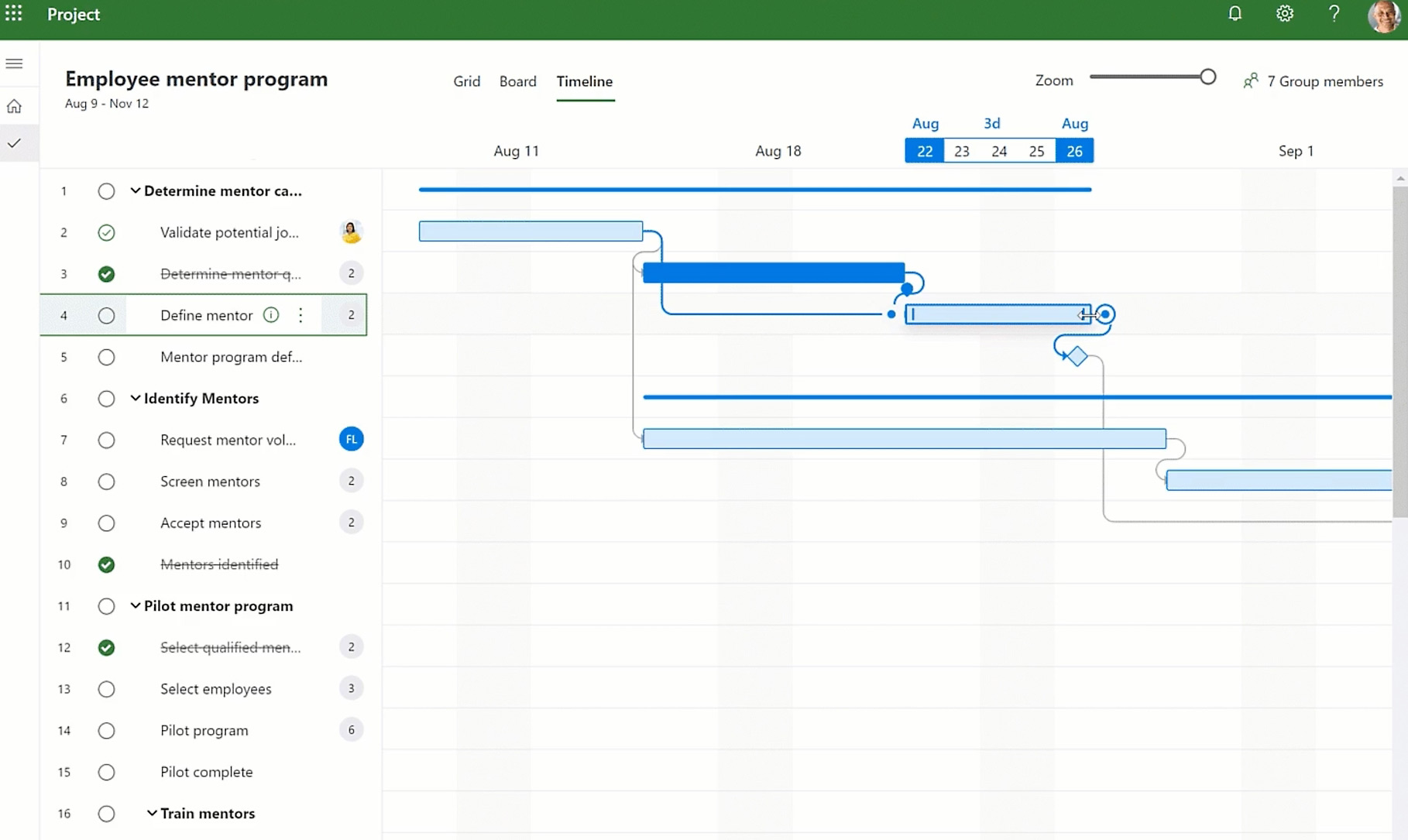
The flexibility of cloud and on-premises deployment options is a significant benefit when compared to other competing pm tools. Larger organizations often appreciate the security and control of an on-premises solution, especially when handling sensitive data. At the same time, the cloud-based Project for the Web version offers a more user-friendly experience, making it accessible to teams that prefer modern, cloud-native tools. This dual offering sets Microsoft Project apart from competitors that only offer one deployment type, limiting flexibility.
Who Benefits Most from Microsoft Project
Large Manufacturing Companies: Manufacturing firms with intricate supply chains and multiple concurrent projects find Microsoft Project particularly beneficial if they already use other Microsoft tools. The detailed resource management and seamless integration with Excel allow these companies to accurately plan and track production schedules, ensuring timely delivery and optimal resource allocation. This integration is crucial for maintaining efficiency and consistency across various production lines and departments.
Consulting Firms Handling Client Portfolios: Large consulting firms managing extensive client portfolios can significantly benefit from Microsoft Project, particularly if they already use Outlook and Teams. The tool's seamless integration with these applications enhances communication, task management, and project coordination across numerous client engagements. Microsoft Project allows consultants to track billable hours precisely, allocate resources effectively across various projects, and generate comprehensive client reports. This ensures that consulting firms can maintain strict project timelines, meet deliverables, and provide detailed progress updates, ultimately improving client satisfaction and boosting project success rates.
Government agencies handling multifaceted projects, such as infrastructure development or community programs, find Microsoft Project particularly useful due to its comprehensive planning and tracking capabilities. The integration with other Microsoft tools like Outlook and Teams facilitates inter-departmental communication and coordination, ensuring that all stakeholders are consistently updated. Additionally, the robust reporting features help agencies track progress and resource allocation, ensuring transparency and accountability in project delivery. This is especially important for government projects that require meticulous documentation and adherence to strict regulatory standards.
What Users Love About Microsoft Project
Many users love how Microsoft Project enhances project management efficiency, particularly in planning and tracking. One user described it as a tool that "fits in well with modern needs," highlighting its capability to create project schedules, track progress, and manage resources efficiently. Another user noted, "Microsoft Project & Portfolio Management (PPM) is so comprehensive in planning and tracking." They emphasized the value of the software's ability to support various methodologies, including Scrum and Kanban, which means it caters to different project management styles. From my hands-on testing, I found the Gantt charts especially helpful, providing a visual way to manage tasks and timelines, a feature some users also pointed out as making it a "gold standard for project management."
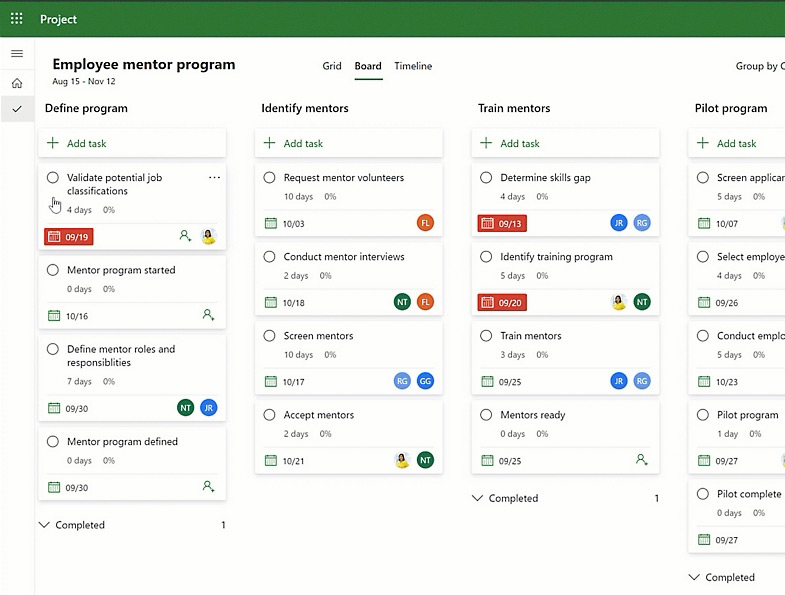
Some users mentioned the benefits of being within the Microsoft ecosystem, where all tools work together harmoniously. One review highlighted how the software's "capacity planning simplifies resource management," a feature that is enhanced when used alongside other Microsoft tools like Outlook for scheduling and OneDrive for file storage. This unified ecosystem means users don't need to switch between different software, reducing the complexity and potential errors associated with using multiple platforms. Collaboration is another area where Microsoft Project shines, thanks to its integration with Microsoft Teams and SharePoint. These tools facilitate better communication and collaboration, ensuring all team members can access the latest project updates and documents. One review highlighted how this integration allows for the easy sharing of dashboards and charts, providing a complete project status at a glance. The familiar interface of Microsoft Project, combined with its seamless integration with Office 365 apps, makes it easier for users to adopt and utilize the software effectively.
The integration with Microsoft SQL Server and other database tools also received positive feedback. Users appreciated how this connection improves data management and security, ensuring that project data is stored reliably and can be accessed when needed. One user remarked on the "comprehensive project management capabilities" that are bolstered by these integrations, making Microsoft Project a robust solution for managing large-scale projects with complex data needs.
User reviews frequently mention the ability to generate professional-looking reports. This feature is essential for stakeholders who need clear and visually appealing project updates. One user emphasized how reports "come out looking extremely professional and are easy to share and use in presentations with executives and stakeholders." This professional presentation enhances credibility and ensures that all project communications are polished and effective.
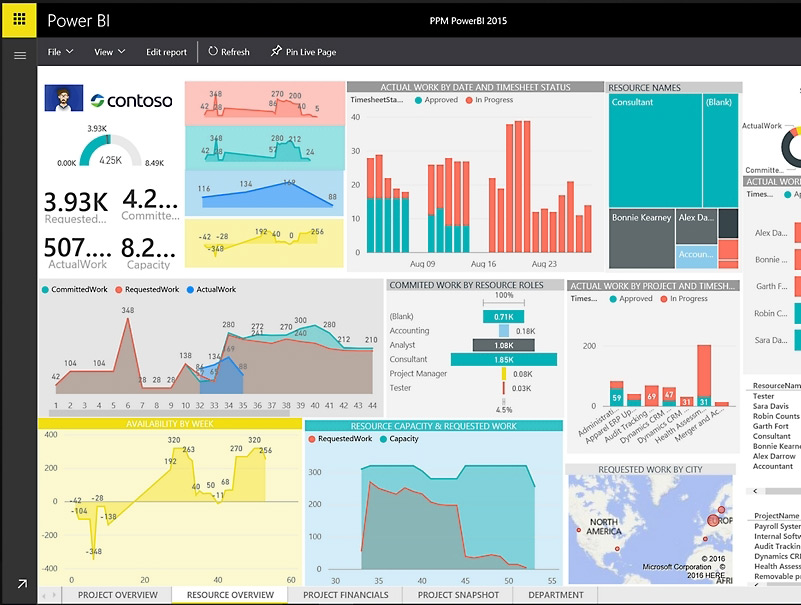
Many users appreciate Microsoft Project's versatility in tracking projects using various methodologies. The software accommodates different project management approaches, including Scrum, Kanban, and custom methodologies. This flexibility means teams can tailor the tool to fit their workflow and project requirements. It is particularly beneficial for organizations adopting a hybrid approach or switching methodologies based on project needs.
One aspect that users frequently mention is the interface's resemblance to MS Excel. This familiarity helps many users get up to speed quickly with the software. As one user pointed out, "The interface is very much like MS Excel, so it is quite easy to get familiar with." This similarity is a significant advantage, especially for those with experience with Excel.
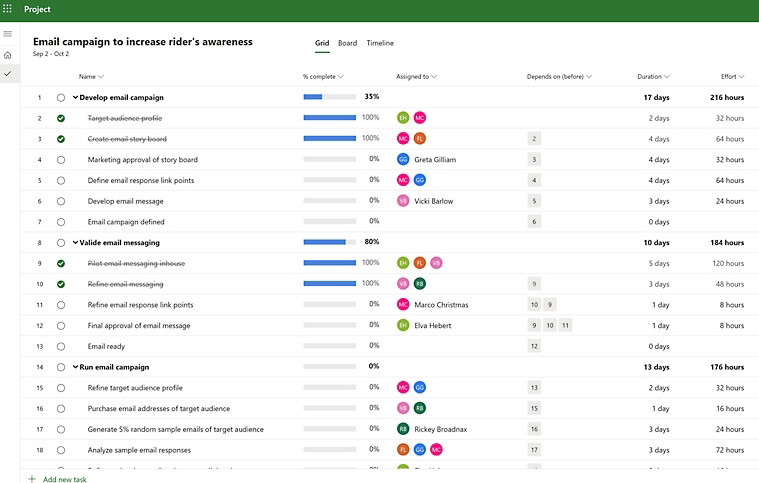
Top Complaints About Microsoft Project
Many users dislike the steep learning curve and complexity of Microsoft Project. One user stated, "The software is too complex for small projects and has a steep learning curve," reflecting a common sentiment that the tool is overwhelming for beginners. From the hundreds of user reviews I scanned, it’s clear that while Microsoft Project offers extensive features, these can be difficult to master without proper training. Another user pointed out, "It feels complex for new users. Need some learning and adaptation which can be time-consuming," which matches my own experience when first using the software. This indicates that while the software offers extensive features, it comes with a significant investment in time and training to use it effectively. Tools like Asana, Paymo, or Trello offer simpler, more intuitive interfaces and lower costs, making them more accessible for small teams and individual users.
The high cost of Microsoft Project is another frequent complaint. Many users feel the software is expensive, especially for small businesses or individuals. One review mentioned, "It was expensive, especially at the very beginning, which was a major hurdle for us." Others have noted that while the software offers robust features, the cost might not be justified for simpler projects. "Microsoft Project allows me to organize projects and provides me with the tools I need, but the cost is quite high," said one user, summarizing the cost-benefit dilemma faced by many.
Some users have reported that Microsoft Project's interface feels outdated and less intuitive compared to more modern project management tools. Microsoft Project's design appears dated compared to platforms like Asana, Trello, or Monday.com, which boast sleek, modern designs prioritizing user experience. One user noted, "Microsoft Project is not the best choice when a project's timeline has numerous changes and lacks fixed dates and durations," highlighting the interface's rigidity as a drawback in dynamic project environments. Modern tools typically offer more flexibility and a visually appealing interface, which can be a significant advantage.
Many users have expressed frustration with Microsoft Project's limited integration capabilities with third-party applications. While the software integrates seamlessly with other Microsoft tools like Excel, Teams, and SharePoint, it often falls short when connecting with non-Microsoft applications. Due to these integration challenges, some users have resorted to manual workarounds to transfer data between Microsoft Project and other tools. One user noted, "The PDF output is cumbersome," suggesting that exporting data for use in other applications is not straightforward. Users who work in environments that utilize various software tools could find these limitations particularly frustrating.
Microsoft Project vs. The Competition
Microsoft Project, Scoro, and Kantata offer comprehensive and extensive project management and financial tracking features tailored for large enterprises managing complex projects. Microsoft Project excels in detailed project tracking and resource management, Scoro provides advanced financial dashboards and robust security measures, and Kantata stands out with real-time insights and resource management. However, all three tools share common drawbacks: a steep learning curve and high cost, making them overwhelming for new users and smaller teams and requiring significant training and investment to utilize their potential fully.
On the other end of the spectrum, Freedcamp, Paymo, and ActiveCollab focus on providing essential project management functionalities at an affordable price, making them ideal for small businesses and freelancers. Freedcamp offers a highly generous free tier with unlimited users, projects, tasks, and storage, providing exceptional value for budget-conscious users. Paymo excels in time tracking and invoicing, catering to small businesses that need to manage billable hours efficiently. ActiveCollab combines simplicity with essential features like task dependencies and time tracking, making it user-friendly for both beginners and professionals. However, these tools come with trade-offs: Freedcamp lacks advanced features and scalability, Paymo has limited mobile app functionality and fewer integrations, and ActiveCollab's limited customization and performance issues with large projects can be restrictive.
ClickUp, Monday, and Podio strike a balance between customization and user-friendly interfaces, making them popular choices for various project management needs. ClickUp stands out for its dynamic adaptability and continuous feature updates, providing extensive customization options that appeal to tech-savvy project managers and large organizations with complex projects. Monday is praised for its aesthetically pleasing interface, high degree of customization, and strong workflow automation features, making it accessible and engaging for visually oriented teams. However, Monday has drawbacks such as high costs, unreliable live chat support, a slow and clunky mobile app, and a confusing notification system. Podio offers unmatched flexibility with its wide range of integrations and customization options, which are suitable for teams with unique project management needs. However, the extensive feature sets of ClickUp and Podio can lead to a steep learning curve and occasional performance issues, such as bugs and slow load times.
Flowlu and Hubstaff cater to specific business needs with their unique features. Flowlu positions itself as an all-in-one business management solution, offering advanced CRM and financial management functionalities at an affordable price, particularly beneficial for SMBs. However, it lacks some essential features, such as a client portal and recurring payments, and could benefit from more customization options and integrations. Hubstaff emphasizes employee monitoring and supervision, with features like regular screenshots, URL monitoring, and mouse and keyboard activity tracking. This tight control is ideal for businesses requiring close oversight of remote teams but raises privacy concerns and may not appeal to all users.
Microsoft Project is highly regarded for its project planning and resource management features. It excels in advanced project tracking, particularly with its interactive Gantt charts and detailed resource management capabilities. However, regarding communication and collaboration, Microsoft Project falls short compared to other tools like Basecamp and Redbooth. It integrates well within the Microsoft ecosystem, allowing for some level of communication through Microsoft Teams and SharePoint, but these integrations can feel less seamless and more cumbersome compared to the built-in features offered by its competitors. Basecamp and Redbooth both offer superior built-in communication and collaboration features compared to Microsoft Project. Basecamp’s real-time chat and message boards and automatic check-ins provide a cohesive environment for team communication and project updates. Redbooth enhances collaboration with HD video meetings and workspaces, though it falls short in mobile reliability and lacks some advanced project management features.
Price and Cost Comparison
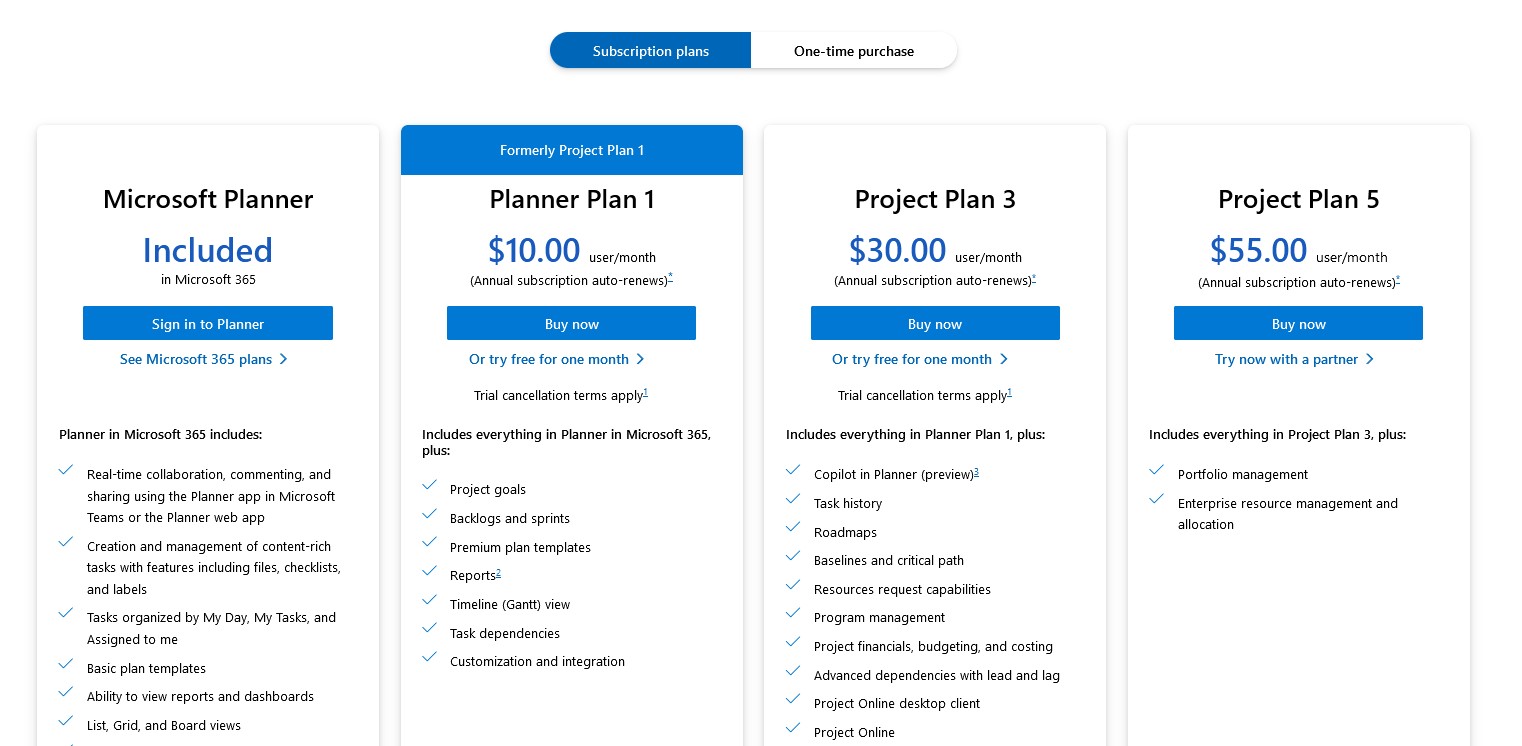
Microsoft Project offers a range of pricing plans suited to different needs. For cloud-based solutions, Project Plan 1 costs $10 per user per month, Project Plan 3 costs $30 per user per month, and Project Plan 5 costs $55 per user per month. On-premise solutions include Project Standard 2021 at $679.99 per license and Project Professional 2021 at $1,129.99 per license.
Microsoft Project, Monday, and Scoro fall into the higher-priced category, tailored for large enterprises. Monday.com’s plans start at $8 per user per month but can escalate to $16 per user per month, with custom pricing for enterprise solutions. Scoro's plans start at $22 per user per month and go up to $55 per user per month, reflecting its comprehensive corporate-oriented features. These tools are ideal for large organizations needing extensive project management and financial tracking capabilities, but their higher costs can be prohibitive for smaller teams.
In the mid-range price category, ClickUp and Redbooth offer more balanced solutions. ClickUp’s pricing starts at $7 per user per month for the Unlimited plan and goes up to $19 for the Enterprise plan. Redbooth’s plans start at $9 per user per month for the Pro plan and $15 for the Business plan. These tools offer robust features at a more accessible price point, making them suitable for medium-sized teams needing powerful project management functionalities without the higher costs of more premium tools.
Freedcamp, Basecamp, and Paymo stand out as budget-friendly options. Freedcamp offers a generous free tier with unlimited users, projects, tasks, and storage, with paid plans starting at $1.49 per user per month. Basecamp is cost-effective for larger teams due to its flat rate of $299 per month for unlimited users and projects, making it cheaper when you have a large team. Paymo, priced at $5.95 per user per month, provides built-in time tracking and invoicing, making it ideal for small businesses and freelancers managing billable hours and client payments.
Microsoft Project and Kantata are both high-end project management tools tailored for large enterprises with comprehensive needs. Both tools offer advanced capabilities, but they come with their own sets of challenges. Both are expensive options, each suited for large enterprises with specific needs. Microsoft Project offers detailed project tracking and resource management at various price points. Kantata, with an average cost of $45 per user per month, provides specialized features for professional services. It excels in resource management and real-time business insights, which are crucial for consulting firms, marketing agencies, and event planners.
When selecting a project management tool, it’s essential to consider your team's specific needs and budget. High-cost solutions like Microsoft Project are best for large enterprises needing extensive features, while mid-range and budget-friendly options provide excellent value for smaller teams and individuals. Each category offers distinct advantages, and the right choice will depend on the specific requirements of your projects and organizational size.
Microsoft Project’s Privacy & Security
Microsoft Project adheres to privacy and security standards as part of the Microsoft ecosystem. Microsoft is committed to ensuring user data privacy and protection through a comprehensive framework detailed on its Trust Center page. Key aspects include:
- Data Protection: Microsoft uses strong encryption protocols to protect data both in transit and at rest. This ensures that user data remains secure against unauthorized access.
- Compliance: Microsoft complies with various global standards and regulations, such as GDPR, ISO/IEC 27001, and SOC 1 and 2. This compliance demonstrates their commitment to maintaining high data security and privacy standards.
- User Control: Users have control over their data with options to manage privacy settings, access their data, and request data deletion. This transparency and user empowerment are crucial for trust and security.
- Security Measures: Microsoft employs multiple layers of security, including physical security measures at data centers, advanced threat protection, and continuous monitoring for potential vulnerabilities and threats.
Selecting the right project management tool involves balancing security needs with other factors, such as usability and cost. Tools like Microsoft Project, Monday, and Scoro are recommended for organizations where security is paramount. For those balancing security with affordability and ease of use, ClickUp and Asana are strong alternatives. Paymo suits smaller teams needing basic security features without extensive costs.
Microsoft Project's Update Frequency
Microsoft Project has consistently rolled out monthly updates over the past year. Specifically, there were 12 updates from June 2023 to June 2024. These updates included significant improvements such as enhanced task assignment features, improved filtering capabilities, and deeper integration with Power Apps. For instance, the October 2023 update focused on enhancing task scheduling and team collaboration within Project for the Web, reflecting Microsoft's commitment to continuous improvement and feature enhancement. Detailed release notes are available on the Microsoft support page.
In comparison, ClickUp updates weekly, offering rapid feature enhancements and bug fixes, which can benefit teams needing constant improvement. TrackingTime releases updates monthly, focusing on stability and incremental improvements, while ActiveCollab updates quarterly, emphasizing stability and significant feature releases.
Monday also updates frequently, typically rolling out new features and enhancements monthly. This includes updates like WorkCanvas, advanced project management tools, and enhanced board communication. Asana maintains a similar update cadence, frequently adding new features and improving existing ones, focusing on integrating AI tools for better project management insights and efficiency. Redbooth, however, updates less frequently, with only a few significant updates each year.
The industry sees monthly to quarterly updates on average, making Microsoft Project’s monthly updates competitive and reliable for ensuring up-to-date project management capabilities.
History of Microsoft Project
Microsoft Project, a staple in project management software, debuted in 1984. This launch places it among the earliest tools designed to help manage and streamline project planning and execution. Created by Microsoft, a company established in 1975, MS Project quickly became integral to many business environments.
Comparing its age and longevity with other project management tools highlights its established presence. Paymo, for instance, launched in 2008, bringing a fresh approach to time tracking and task management. Trello, introduced in 2011, revolutionized the market with its intuitive card and board system. Asana, another popular choice, has been helping teams coordinate their work since 2012. Monday.com, entering the scene in 2014, offered a highly customizable and visual project management platform.
ClickUp, which started in 2017, stands out for its high level of customizability and feature richness, making it a versatile option for various project management needs. Scoro, founded in 2013, focuses on corporate project management with advanced financial tracking and reporting features, catering to larger enterprises. Kantata, which emerged from the merger of Mavenlink and Kimble in 2021, combines strong project management with resource planning and business intelligence, targeting professional services firms.
The longevity of Microsoft Project reflects its adaptability and continuous improvements over the years. While newer tools like Paymo, Trello, Asana, and Monday.com have brought innovative features and user-friendly interfaces, MS Project has maintained its relevance through robust functionality and integration with other Microsoft products. This history of evolution underscores its role in the development of project management software, providing a reliable option for businesses over decades.
The Final Verdict on Microsoft Project
Microsoft Project is a powerful tool for managing complex projects, offering deep planning and tracking capabilities. Its interactive Gantt charts and advanced resource management features make it particularly suitable for large enterprises and detailed project oversight. Integration with the broader Microsoft ecosystem, including Excel, SharePoint, and Teams, enhances its utility by ensuring seamless data sharing and collaboration. However, the software's steep learning curve and high cost can be prohibitive for smaller teams and beginners. Despite these challenges, Microsoft Project remains a top choice for organizations that need robust project management features and are already invested in the Microsoft suite.
Written by Remus Zoica
